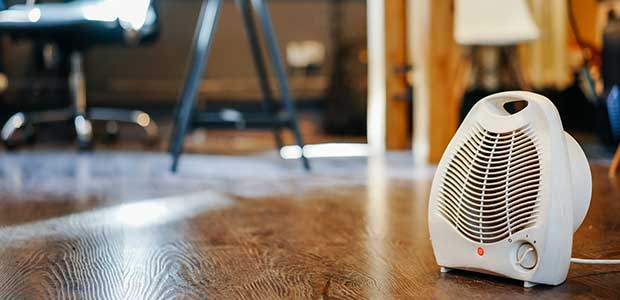
Space Heaters Account for 43 Percent of U.S. Home Heating Fires, NFPA Reports
NFPA reports that heating equipment is the second-leading cause of U.S. home fires and the third-leading cause of home fire deaths. More than half (53 percent) of all home heating fire deaths resulted from fires that began when heating equipment was too close to things that can burn, such as upholstered furniture, clothing, mattresses, or bedding.
- By Jessica Davis
- Jan 11, 2018
The National Fire Protection Association’s latest U.S. Home Fires Involving Heating Equipment report was released Tuesday, in time for important reminders about winter fire safety.
NFPA reports that heating equipment is the second-leading cause of U.S. home fires and the third-leading cause of home fire deaths. More than half (53 percent) of all home heating fire deaths resulted from fires that began when heating equipment was too close to things that can burn, such as upholstered furniture, clothing, mattresses, or bedding.
December, January, and February are the leading months for home heating fires, and the colder weather means more use of portable space heaters. According to the report, portable and stationary space heaters accounted for more than two of every five (43 percent) U.S. home heating fires and five out of six (85 percent) home heating fire deaths between 2011 and 2015.
“Space heaters can be effective tools for providing added warmth at home, but it’s critical that people follow basic precautions to ensure that they’re used safely,” said Lorraine Carli, vice president of NFPA’s Outreach and Advocacy division.
The following are important home heating safety tips to help reduce the risk of home fires during winter:
- Space heaters should be placed at least three feet away from anything that can burn.
- There should be a three-foot zone kid-and-pet-free zone around open fires and space heaters.
- Space heaters must be turned off when people leave the room or go to sleep.
- Plug only one heat-producing appliance into an electrical outlet at a time.
- Never use your oven to heat your home.
- Install and maintain carbon monoxide alarms to avoid the risk of CO poisoning. If you smell gas in your gas heater, do not light the appliance. Leave the home immediately and call your local fire department or gas company.
- Install wood burning stoves following manufacturer’s instructions or have a professional do the installation. All fuel-burning equipment should be vented to the outside to avoid carbon monoxide (CO) poisoning.
- Have a qualified professional install stationary space heating equipment, water heaters or central heating equipment according to the local codes and manufacturer’s instructions.
- Have heating equipment and chimneys cleaned and inspected every year by a qualified professional.
- Always use the right kind of fuel, specified by the manufacturer, for fuel burning space heaters.
- Make sure the fireplace has a sturdy screen to stop sparks from flying into the room. Ashes should be cool before putting them in a metal container. Keep the container a safe distance away from your home.
About the Author
Jessica Davis is an Associate Content Editor for 1105 Media.